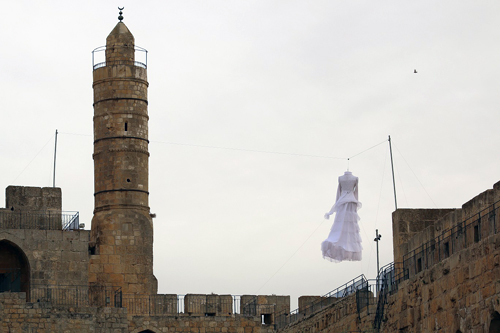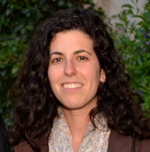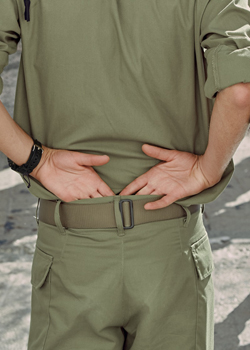
By Anav Silverman


JERUSALEM (Tazpit)- Nearly 200 Israeli and international professional artists are showcasing their artwork in the second annual Jerusalem Biennale For Contemporary Jewish Art (September 24 – November 5). The works are featured in 10 different exhibitions held in different venues across the city that include secular and ultra-Orthodox Israeli Jewish curators and artists as well as international Jewish and non-Jewish artists.
One of the featured artists at the Biennale’s main exhibition, Jerusalem.Passages, at the Tower of David Museum is Brazilian video artist, Pablo Lobato, whose work, along with four Israeli artists, Sigalit Landau, Motti Mizrachi, Yenin Shilo, and Dov Abramson can be seen at the ancient citadel located near the Jaffa Gate to the Old City of Jerusalem.
The Brazilian video artist created a new video work especially for the Jerusalem Biennale as part of several international exhibits at the festival from Los Angeles, New York, Barcelona and Buenos Aires.
“We invited Pablo for his first visit to Israel during Passover this year to do an art project related to his visit,” Rami Ozeri, founder of the Jerusalem Biennale told Tazpit. “He knew nothing about Judaism and our people and came to observe our country with open eyes,” Ozeri explained of the Brazilian artist who has specialized in filming rites in the Catholic world.
“Art is not just about how we see ourselves, but also how someone from the outside sees us and what interests them,” added Eilat Lieber, the director of the Tower of David Museum. “We very much wanted to exhibit Pablo’s work here at the museum.
For the Israeli exhibition, Lobato, who was commissioned to visit Jerusalem by the Biennale, created a new video work of 21 photographs of Israeli soldiers whose hands are resting behind their backs during an IDF swearing-in ceremony. Titled ‘Distracted We Will Win,’ the photographs were taken during Lobato’s week-long visit to Jerusalem during the Passover and Easter holiday period earlier in the year.
“Pablo visited all kinds of holy places, and saw rituals and ceremonies including a Hassidic tish in Mea Shearim and Palm Sunday,” Ozeri said. He noted that Pablo witnessed the unique way that the Jewish people celebrate Passover but it was a fairly common event in Israel that ultimately drew his attention.
“Out pf everything he saw, it was this IDF swearing-in ceremony at the Kotel that caught his eye,” said Ozeri.
“You can see this scene all the time in the Kotel, but I never saw it from the angle of the soldiers’ resting hands,” said Ozeri. “Pablo needed to come all the way from Brazil to capture this moment.”
Lobato has exhibited his work internationally throughout the past decade in film festivals and museums including the Sundance and Locarno Film Festivals as well as contemporary art museums in cities such as Mexico City, Barcelona, San Paulo, Berlin and New York, among others. He works with different types of media such as cinema, photography, and installations.
Another piece of artwork at the Tower of David that is drawing much attention is a 5 meter-high (16 feet) white-lace wedding dress, hovering right outside the citadel tower, suspended by helium balloons. The installation work called ‘Engagement’ was created by the Israeli multi-disciplinary artist, Motti Mizrachi. Mizrachi, whose sculptures can be seen across Israel in museums, parks and squares, also represented Israel in the 1980 Biennale de Paris, 1981 Sao Palo Art Biennale, and 1988 Venice Biennale.
“The wedding dress was made in Ramle and was based on a poem by Alexander Penn, called ‘Land, My Land,’ as well as the Chagall painting of the floating bride and groom” Mizrachi told Tazpit.
“I had two people assist with this installation – an Arab artist, Nihad, based in Ramle and Susannah, a Moroccan designer of mythological wedding dresses,” he explained.
Biennale founder Rami Ozeri is thrilled with the combination of Israeli and international artists taking part in this year’s Jerusalem Biennale. “We want to include more international artists alongside Israelis, to create a debate on what is contemporary Jewish art in the spiritual and creative center of the Jewish world.”
“Anyone interested in contemporary Jewish art must come to Jerusalem every two years to see these amazing works,” Ozeri said.
The Jerusalem Biennale’s main sponsor is the San Diego County-based Leichtag Foundation, along with the Jerusalem Municipality, the Pershing Square Foundation (NY) and Bank Hapoalim.
*
Silverman is a staff writer for the Tazpit News Agency in Israel.